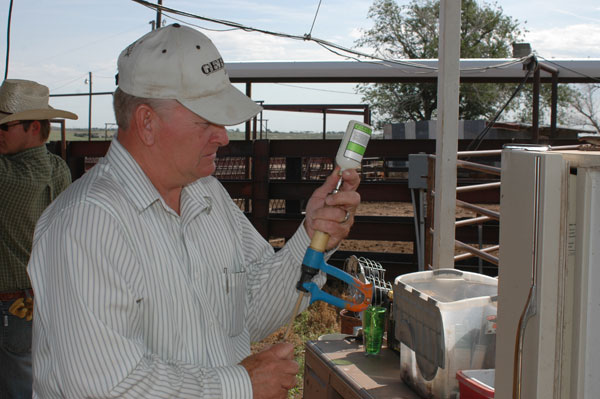A good quality control program should include proper animal ID, good treatment records, established written protocols, trained employees, the following of label instructions and avoiding extra-label drug use.
January 28, 2016

A cattle operation’s goal of good antibiotic stewardship is to minimize negative consequences of their usage, but there’s no cookie cutter model to fit every cow-calf, stocker or feeding operation, said Brian Lubbers, Kansas State University microbiologist.
Lubbers was one of many instructors at the annual Cattlemen’s College presented Wednesday, Jan. 27, during the Cattle Industry Convention and NCBA Trade Show in San Diego, Calif. Animal health was a key part of the learning sessions and pressure against some of the beef industry’s usage of antibiotics brought the subject to the forefront.
The use of antibiotics in cattle involves pre-treatment to keep animals from getting sick, Lubbers said, and continues with identifying the root cause of antibiotic need for treatment and post-treatment.
“Use antibiotics that are proven for treating and controlling the disease in the manner for which they are approved,” he added. “Then, evaluate the effectiveness of the antibiotics used.”
A licensed veterinarian should be involved in determining if an antibiotic program is needed for a particular operation. “The Food and Drug Administration and (animal health product) manufacturers have given us some good products that work, but not in every cattle system,” Lubbers said.
He said the goal of minimizing negative consequences of antibiotics usage involves namely preventing the possibility of resistance and residue and sometimes overbearing regulations of their usage.
“The more an antibiotic is used, the more the chance for resistance. When bacteria becomes resistant, it is more difficult to treat,” Lubbers said, adding that antibiotic residue can be minimized and eliminated by strong quality control. “As an industry, we should promote the Beef Quality Assurance program.”

BEEF Seedstock 100 List
Looking for a new seedstock provider? Use our UPDATED Seedstock 100 listing to find the largest bull sellers in the U.S. Browse the list here.
A good quality control program should include proper animal ID, good treatment records, established written protocols, trained employees, the following of label instructions and avoiding extra-label drug use. “Extra-label drug use can cause residue,” Lubbers said. “It has to be under the direction of a veterinarian. And remember that the use of extra-label feed grade drugs is illegal.”
He said to expect more pressure on the use of antibiotics in animal agriculture. There will be more scrutiny when the new Veterinary Feed Directive (VFD) becomes a requirement after this year. “It will put a magnifying glass on the use of antibiotics,” Lubbers said.
“The VFD is a written, nonverbal statement issued by a licensed vet in the course of the vet’s professional practice that authorizes the use of a VFD drug or combination VFD in or on animal feed,” he said.
He encouraged producers and feeders to communicate closely with their feed distributor and vet to determine the logistics of how the VFD will impact their operation.
You might also like:
15 best winter on the ranch photos
2016 market outlook: Here's what to expect
A voice of reason in the Bundy-Hammond debate
7 ranching operations awarded top honors for stewardship, sustainability
You May Also Like



